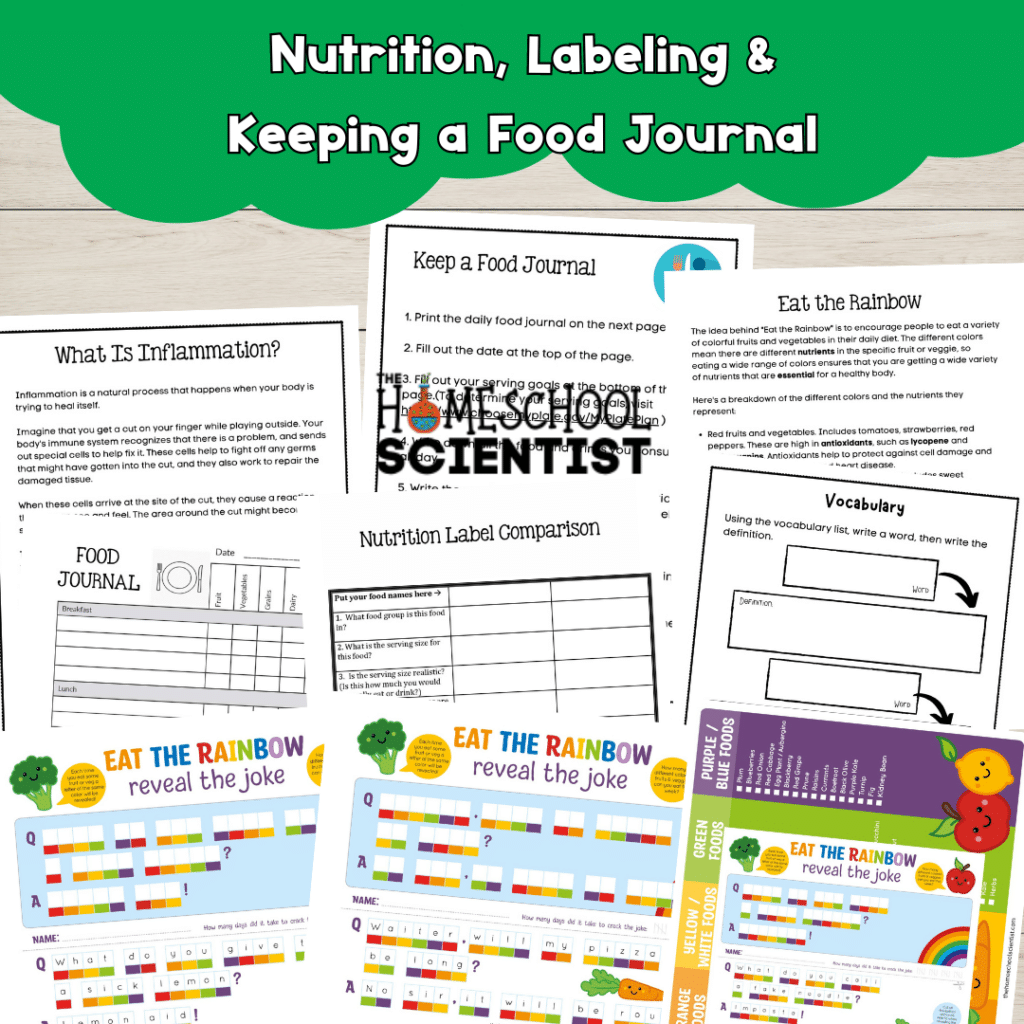Comparing Nutrition Labels Activity For Kids
Your kids come running in after enjoying some nature study time outside, and they’re ready for a snack.
You offer oranges or carrot sticks.
One child pipes up saying he wants cookies!
How do you help them really understand what healthy food options are and why we should eat healthy most of the time?
Advertisements do not help and often lead children to believe that certain products are good for them when in reality, they are not. To teach your children how to read between the lines of advertising, check out the Discerning Nutrition Advertisements Project.
Learning about Nutrition Labels
What’s in nutrition labels? Why is this information important? What do you do with that information? How do nutrition labels help you and your kids make healthier choices?
The FDA has an outstanding resource area in their Educator’s Toolkit for teaching children about nutrition labels.
The FDA has a Kid’s Corner with nutrition education activities.
Try this nutrition label comparison project to learn more.
Nutrition Label Comparison Project
Request our free 20+ nutrition activities printable pack, which includes a nutritional label activity. Grab a few labels from your pantry or refrigerator, trying to aim for different types of foods (like grains, canned vegetables, sauces, cheeses, etc.).
If you want to compare nutrition information from a raw fruit or vegetable, check this page from the FDA for nutrition information. Either have your kids fill out the comparison chart, or work together to compare your nutrition labels.
Once you’re done, answer the reflection questions to find out which of the two labels represent a healthier choice. Further questions for analysis:
- What components of the nutrition label should you look at most often while in the grocery store?
- If someone needs to limit cholesterol intake to 200mg per day, which of the labels from your pantry would be healthier options?
- How does your favorite snack compare nutritionally to a raw fruit?
Nutrition Label Search – An Active Game
Want an active game to practice reading nutrition labels?
Spread at least 8-10 nutrition labels around the yard or an open floor. An older sibling or parent can call out a component to look for on the nutrition label (ie: “How many grams of carbohydrates does your food have?). At your signal, have your kids run (or hop, gallop, slide, crawl, dance) to a nutrition label, pick up the label, find the nutrient, and then do that number of a fitness exercise or movement. (Example: If there’s 32 grams of carbohydrates on that label, do 32 jumping jacks!) Repeat for 8-10 rounds. Younger siblings can pair up with older siblings, too.
How to use the Eat the Rainbow Activity –
1. Print the sheets and cut them along the lines.
2. As your child eat healthy food that matches the color in a riddle, you give them the letter that goes in that box. So, for example, if working on the first riddle (What kind of key opens a banana?), the first box is red. So, when your child eats a red food – an apple, a red pepper, etc., you would give them a clue “W.” If their next healthy food is a green pepper, then you could give them the first green clue – a T. They can eat the colors in order or do it more like Wheel of Fortune, where they don’t do the letters in order and then try to guess the riddle. The idea is to eat each color, whether in order or not, to complete the riddle.
Recommended Reading
- The American Heart Associations offers a great overview of reading nutrition labels here.
- The Choose My Plate website has games, activity sheets, videos, and more for learning about healthy eating.
- To learn more about the types of fats and recommended intake, check out this page from the American Heart Association.
Learn More About Nutrition
FDA Nutrition Toolkit for Teaching Children About Nutrition
Studying Nutrition Pinterest Board
The FDA has a Kid’s Corner with nutrition education activities
How could learning about nutrition labels help your children take ownership of their food choices?
*******************************
Guest post by Caroline Flory. Caroline is a homeschooling mom, certified personal trainer, and former public school teacher.
Read Caroline’s other guest posts – Discerning Nutritional Advertisements and Experimenting With Flexibility.
I hold a master’s degree in child development and early education and am working on a post-baccalaureate in biology. I spent 15 years working for a biotechnology company developing IT systems in DNA testing laboratories across the US. I taught K4 in a private school, homeschooled my children, and have taught on the mission field in southern Asia. For 4 years, I served on our state’s FIRST Lego League tournament Board and served as the Judging Director. I own thehomeschoolscientist and also write a regular science column for Homeschooling Today Magazine. You’ll also find my writings on the CTCMath blog. Through this site, I have authored over 50 math and science resources.



